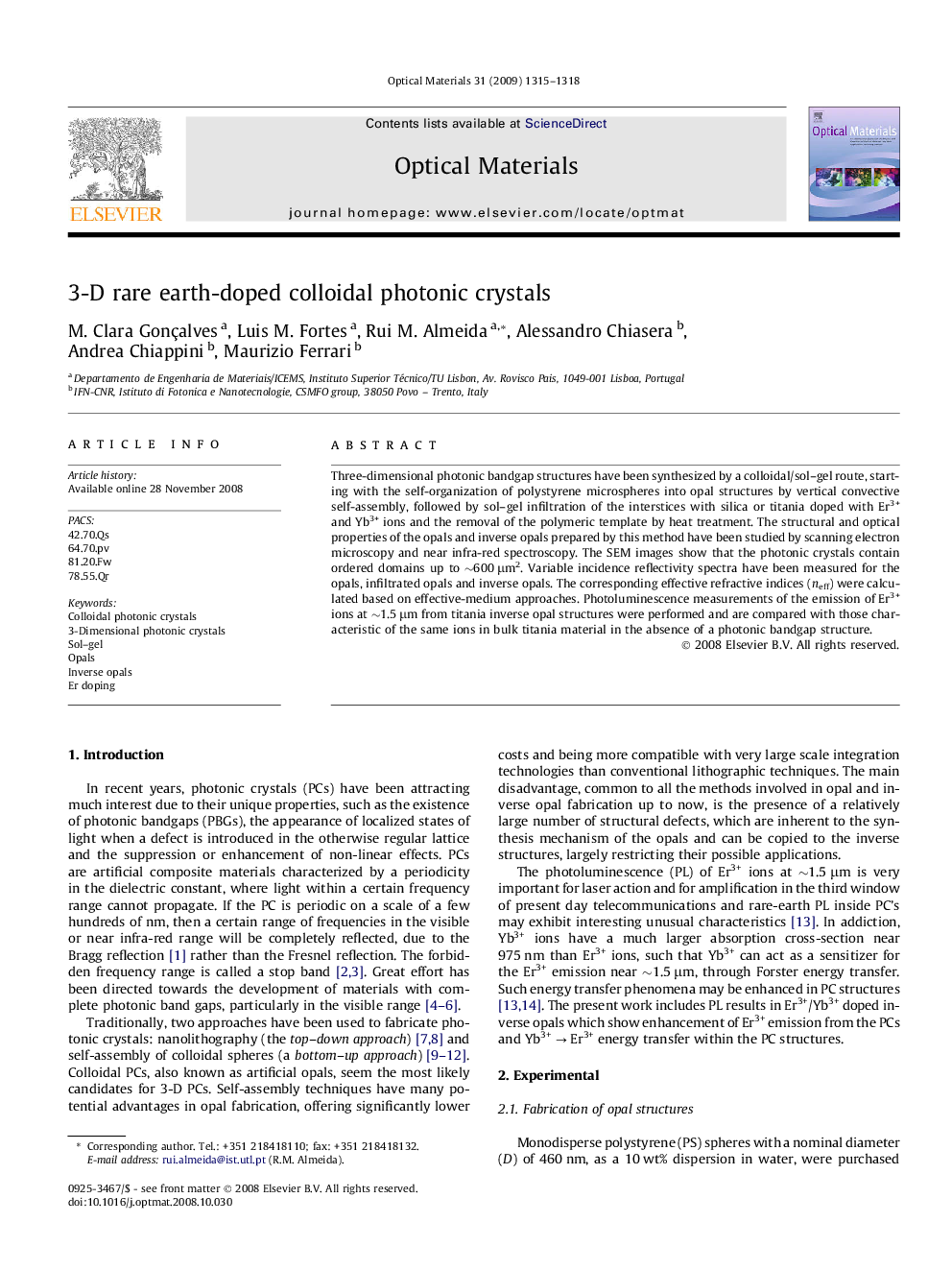| Article ID | Journal | Published Year | Pages | File Type |
|---|---|---|---|---|
| 1496496 | Optical Materials | 2009 | 4 Pages |
Three-dimensional photonic bandgap structures have been synthesized by a colloidal/sol–gel route, starting with the self-organization of polystyrene microspheres into opal structures by vertical convective self-assembly, followed by sol–gel infiltration of the interstices with silica or titania doped with Er3+ and Yb3+ ions and the removal of the polymeric template by heat treatment. The structural and optical properties of the opals and inverse opals prepared by this method have been studied by scanning electron microscopy and near infra-red spectroscopy. The SEM images show that the photonic crystals contain ordered domains up to ∼600 μm2. Variable incidence reflectivity spectra have been measured for the opals, infiltrated opals and inverse opals. The corresponding effective refractive indices (neff) were calculated based on effective-medium approaches. Photoluminescence measurements of the emission of Er3+ ions at ∼1.5 μm from titania inverse opal structures were performed and are compared with those characteristic of the same ions in bulk titania material in the absence of a photonic bandgap structure.
